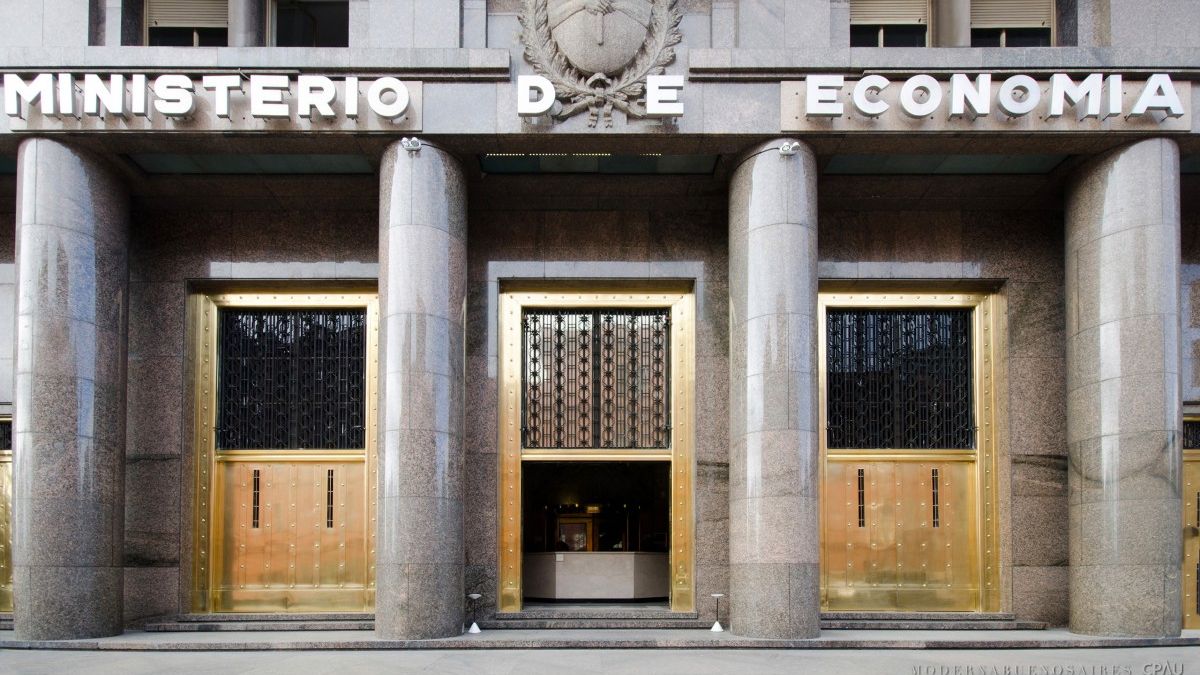Finally, Finance captured more than was due and increased the monthly balance. The maturities to be refinanced in this tender included, in addition to those originally scheduled for December 31, those with a payment date of January 3, 2022, the day on which this auction will be settled. “Therefore, the $ 334,445 obtained today allows refinancing the maturities of $ 292,377 million,” they explained in Economy.
Thus, December ends with a positive net financing of $ 147,074 million, the second highest of the year, and a refinancing rate of 146%. This Thursday, in the second round of the auction, in which the six banks and brokerage firms designated as market makers will participate, Finance may add some extra.
Of the total total awarded, 80% corresponded to securities maturing in 2022, 14% to 2023 and 6% to 2024. In addition, 53% went to fixed rate instruments, 37% to CER-adjustable instruments (inflation) and the remaining 10% to variable rate.
The 14-day Lelites (exclusively for mutual funds) raised $ 29,843 million at a nominal annual rate of 34.65%. The three Ledes offered together contributed $ 146,018 million with rates of 40.98% in February, 43.19% in April and 44.27% in May. The new letter indexed to inflation (Lecer) to October was the one that attracted the most funding: $ 90,337 million at a real rate of 1.26%. Then, in the 2023 Badlar rate bond (TB23), $ 34,436 million entered at a nominal annual rate of 43.19%. And the two Boncer (T2X3 and T2X4) contributed $ 33,811 million at 2.33% and 3.66% in real terms respectively.
Equilibra’s chief economist, Lorena Giorgio, highlighted that, to attract this higher funding, Economy “Ended up validating higher rates”. For example, in the bidding two weeks ago, the Ledes to April had cut to 42.74% annual nominal and the one that expires in May, to 43.5%. The Boncer T2X3 had also been offered that time and had paid an actual yield of 2.24%.
In this regard, official sources told Ámbito that there was a recognition rate, according to the instrument, of between 0.35 and 0.60 points but “in a market where at this time of year liquidity suffers.”
It was a bet to gather more net financing this month and try to limit the issue in a December always complex due to the high seasonality of the deficit. “The month came with a lot of assistance from the BCRA because we estimate a primary deficit that will be around one point of GDP. That is why it was essential not to erode the market funding cushion that had been accumulating. Even more so considering that although in December the demand for money would surely validate a large part of those pesos dumped into the market, in January and February the seasonality turns around and will generate pressure on the exchange market and the gap in a scenario of scarce reserves net and upcoming dollar debt maturities, ”said Giorgio.
For this reason, the BCRA also re-ignited the peso aspita and, through the placement of passes to the banks, reabsorbed a large part of the pesos issued to finance the Treasury so far in December.
Financial program 2021
In recent months, Economics had indicated that the objective was to end the year with accumulated net financing of over $ 600,000 million and a rollover of annual maturities in pesos of between 115% and 120%. With this result, he managed to exceed those figures.
The one that will not be reached is the budgeted guideline of covering 60% of the fiscal deficit of 2021 with direct assistance from the Central Bank and 40% with new debt in pesos. A financing mix that Guzmán had designed to reduce the monetary issue with respect to 2020 under the premise that a strong injection of working capital would feed back the pressures on the dollar.
With the latest data available, the BCRA’s assistance to the treasury accumulated $ 1.9 trillion in gross terms, that is, without discounting the prepayment of temporary advances that the Government made after the entry of the IMF’s special drawing rights (SDR). that the bulk of analysts consider that this operation had no concrete monetary impact. That equates to 72% of financial sources, well above the 60% guideline. Officials do consider that the issuance must be netted with that pre-cancellation: in this case, it would accumulate $ 1.5 trillion and would represent 67% of Treasury financing.
All in all, monetary assistance will end the year with a significant reduction compared to the 2020 shock, when (with almost no access to credit in pesos after the 2019 reprofiling and with the covid package in full force) it reached 7.3% of GDP. In 2021, it accumulates between 3 and 4.2 points of the product, depending on whether or not the prepayment of advances made with the SDR is counted.
What’s coming
For next year, the financial program will be conditioned by negotiation with the Fund. Guzmán’s budget project, which was blocked by the opposition in Congress, proposed a reduction in Treasury financing via issuance to 1.8% of GDP. The scheme to cover needs for 4.9% of the product was completed with 2% of new debt in pesos and 1.1% of net disbursements from multilateral and bilateral organizations.
But in part it will be subject to what is finally agreed. The IMF, despite the fact that the audit of the multimillion dollar loan to Mauricio Macri reaffirmed the multi-causality of inflation, is fighting for stricter monetary targets in the negotiation of the multi-year program, which will be the basis of the agreement that the Government seeks to refinance the debt of u $ 45,000 million. In fact, that would imply a major adjustment.
However, Guzmán said this Wednesday in an interview with the Spanish newspaper El País that “With the staff, understandings have been built that today are profound” and he assured that today the main obstacle is through the endorsement of some countries: “At the shareholder level, there has been a growth in understanding of the situation, but it has not occurred at the speed that would be desirable in order to already have an agreement with the International Monetary Fund. It is necessary to obtain all the international consensus that is necessary to be able to have an agreement between both parties ”.
In this framework, next year the Ministry of Finance will face the challenge of renewing maturities for more than $ 4 trillion and, above that, obtaining additional financing.
Source From: Ambito
David William is a talented author who has made a name for himself in the world of writing. He is a professional author who writes on a wide range of topics, from general interest to opinion news. David is currently working as a writer at 24 hours worlds where he brings his unique perspective and in-depth research to his articles, making them both informative and engaging.




